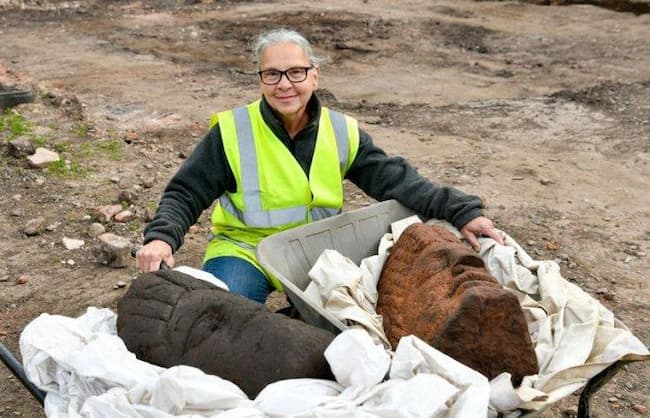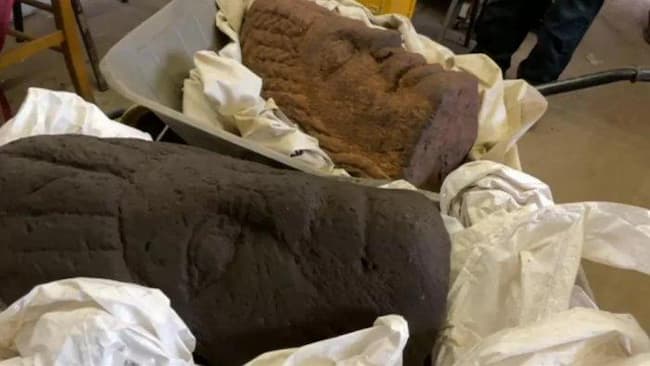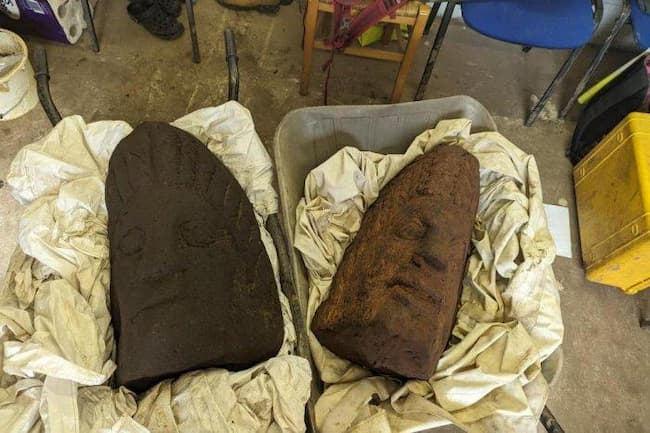Not so long ago, the public was invited to participate in the Carlisle Roman bath excavation.
The project, run by Wardell Armstrong, Cumberland Council and Carlisle Cricket Club, has received £56,700 in funding from the government. The community archaeology project has been a success. The excavations benefited people by increasing interest in history and the city’s heritage, and impressive archaeological discoveries were also made.

Uncovering the site’s Roman past is hard but rewarding work. During the latest excavation at Carlisle Cricket Club, two amazing Roman sculptures were unearthed by volunteer archaeologists. The site’s lead archaeologist Frank Giecco said they were “unique and priceless.”
The preserved effigies of heads are carved from sandstone, standing two feet high “emerged from the dirt in almost perfect condition,” News and Star report. The artifacts were found abandoned at the edge of what was once a cobbled Roman road. Experts think they could be of Emperor Septimus Severus and Emperoress Julia Domna.

“The sandstone artefacts are thought to date back as far as AD 200 and once formed part of full-figure pieces about 12-15 ft (3.5-4.5m) high. The stone sculptures, three times the size of a human head, were found at the edge of what was once a cobbled Roman road close to Hadrian’s Wall in the city,” BBC reports.
More than 1,000 artifacts, including pottery, weapons, coins and semi-precious stones unearthed here, offer evidence the site is of great historical importance. Archaeologists can expect to unearth more here in the future.
“In 30 years of being an archaeologist I’ve never found a thing like this before. It’s just incredible for Carlisle. It just raises the status of this building,” Giecco told BBC.

The archaeologists also explained it is not unusual to find such sculptures in bathhouses, but their size makes this find exceptional.
“You can probably count on one hand examples of this kind in Britain,” he said.
Volunteers assisting on the digs have described the find as “really exciting”.
One said: “It was when all the real archaeologists, the professionals, got excited and started crowding round themselves that I realized it was properly something to be excited about.”

